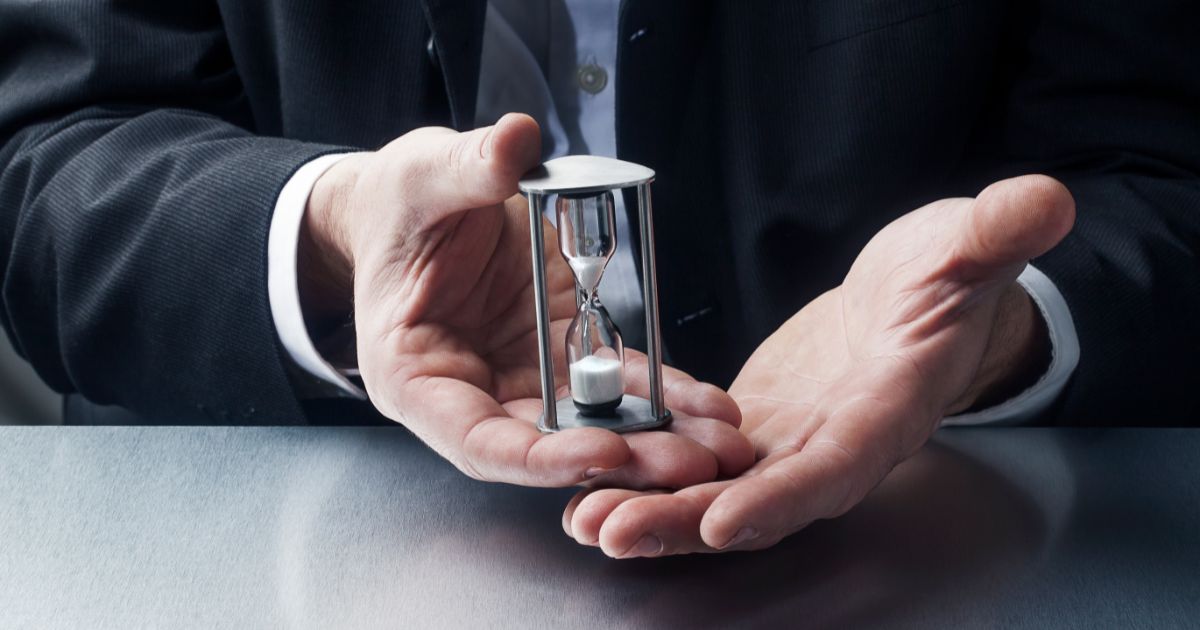11 Tips To Improve Your Presentation Skills: Overview Guide
Developing strong presentation skills offers numerous benefits. Professionally, it can lead to career advancement, as effective communicators are often seen as leaders and influencers. Academically, it can enhance your ability to share knowledge and ideas. Personally, it can boost your confidence and improve your ability to connect with others.
This article will explore 11 practical tips to help you enhance your presentation skills. These tips will equip you with the tools you need to deliver presentations with confidence and impact.
Know Your Audience

Knowing your audience is the cornerstone of effective presentations. It's the foundation upon which you build all other aspects, from crafting your message to choosing the delivery style.
Understand Their Needs and Interests
To tailor your presentation effectively, you should start by understanding your audience's needs and interests. Research their backgrounds, roles, and what they hope to gain from your presentation. This knowledge encourages you to highlight the most relevant information and make your content more engaging.
Adapt Your Language and Tone
Adjust your language and tone based on your audience’s familiarity with the topic. For a technical audience, you can use industry jargon and dive into complex details. For a general audience, keep explanations simple and avoid technical terms that might confuse them. Using the right language makes your message clear and accessible.
Address Their Pain Points
Identify the challenges or pain points your audience faces and address them directly in your presentation. Showing that you understand their problems and offering solutions demonstrates empathy and builds credibility.
Consider Their Expectations
Understand what your audience expects from your presentation. Are they looking for detailed data, actionable insights, or high-level overviews? Meeting or exceeding their expectations is an attractive way to your presentation well-received and impactful.
Be Culturally Sensitive
If your audience is diverse or from different cultural backgrounds, be mindful of cultural sensitivities and differences. Avoid using examples, language, or humor that might not translate well or could be misunderstood.
Monitor and Adjust During the Presentation
Pay attention to your audience’s reactions and be ready to adjust your presentation accordingly. If you notice signs of confusion or disengagement, clarify points or change your delivery style to re-engage them. Being adaptable means your presentation remains effective throughout.
Structure Your Presentation
Structuring your presentation effectively is like building a house: a solid foundation leads to a clear, engaging, and impactful experience for your audience. Start with an engaging introduction, follow with the main points supported by evidence, and conclude with a strong closing statement or call to action.
Develop the Main Content
Arrange your information in a sequence that makes sense, whether it's chronological, by priority, or thematic. This clear structure leads your audience to follow your argument or narrative easily. Break down your main points into smaller subsections to make the content more digestible, permitting you to cover each aspect in detail without overwhelming your audience.
Ensure Smooth Transitions
Smooth transitions between sections are essential for maintaining the flow of your presentation. Use transitional phrases or sentences to link sections seamlessly, helping to keep the audience engaged. You can briefly recap the previous section before introducing the next one to reinforce the information and ensure your audience is following along.
Craft a Powerful Conclusion
Your conclusion should effectively summarize the key points of your presentation to reinforce your message. A concise recap aids in solidifying the information in your audience's memory. Following the summary, provide a clear call to action, instructing your audience on what steps to take next. Conclude with a memorable statement, quote, or thought-provoking idea to leave a lasting impression on your audience. A strong closing makes sure that your presentation is impactful and memorable.
Practice, Practice, Practice

Rehearse your presentation multiple times to become familiar with your content and improve your delivery. Practicing benefits reduces anxiety and you easily refine your timing and pacing.
Rehearse Multiple Times
One of the most effective ways to improve your presentation skills is through extensive practice. Rehearse your presentation multiple times to become familiar with the content and flow. Each rehearsal aids solidify your understanding of the material and improves your ability to deliver it smoothly. Repeatedly practicing permits you to identify and address any weak points in your presentation, making sure of a polished final delivery.
Record and Review
Recording your rehearsals can be incredibly beneficial. When you play back the recording, you can objectively evaluate your performance. Look for areas where you can improve, such as your pacing, tone, and body language. Pay attention to how you transition between points and how clearly you convey your message. This self-review process assists you to refine your presentation and make necessary adjustments.
Simulate the Presentation Environment
Practicing in an environment similar to where you will be presenting can significantly boost your confidence. If possible, rehearse in the actual room where you will present or in a space that mimics its setup. Familiarizing yourself with the environment reduces anxiety so you can focus on delivering your content effectively. Pay attention to factors like lighting, acoustics, and the placement of your visual aids.
Refine Your Delivery
Regularly practicing is an effective way for you to refine your delivery skills. Work on modulating your voice to emphasize key points and avoid a monotone delivery. Pay attention to your body language, including gestures, eye contact, and posture. Confident and dynamic delivery enhances your credibility and helps you connect with your audience.
Adapt and Iterate
Each practice session is an opportunity to adapt and iterate. As you identify areas for improvement, make the necessary adjustments and practice again. Continuous iteration aids you to refine your presentation and build confidence in your delivery. Embrace the iterative process as a way to continuously enhance your skills.
Use Visual Aids Effectively
Incorporate visual aids like slides, charts, and videos to enhance your presentation and make complex information more understandable.
Choose the Right Visuals
Selecting appropriate visual aids is crucial for enhancing your presentation. Choose visuals that complement and reinforce your message rather than distract from it. Attend that each visual aid, like slides, charts, graphs, images, and videos, is directly related to the content you are discussing.
Keep It Simple
Avoid cluttered slides with too much text or overly complex graphics. Use bullet points, short phrases, and clear images to convey your message. Simple, clean visuals are easier for your audience to understand and remember.
Use High-Quality Images and Graphics
Blurry or pixelated visuals can detract from the professionalism of your presentation. High-quality visuals maintain your audience's attention and make your presentation look polished and credible.
Consistent Design
Maintain a consistent design throughout your presentation. Use the same fonts, colors, and styles for all your slides and visual aids. Consistency creates a cohesive look and feel, making your presentation more visually appealing and easier to follow.
Highlight Key Points
Use visual aids to emphasize your key points. Highlight important information with different colors, bold text, or larger fonts. It draws your audience’s attention to the most critical parts of your presentation and reinforces your main messages.
Incorporate Charts and Graphs
Charts and graphs are excellent tools for presenting data and making complex information more understandable. Choose the appropriate type of chart or graph (e.g., pie chart, bar graph, line graph) based on the data you are presenting. Make sure they are clearly labeled and easy to interpret.
Use Animation Sparingly
Animations can be effective for highlighting key points or showing processes and changes over time. However, use them sparingly to avoid overwhelming your audience. Simple transitions and subtle animations can add interest without being distracting.
Engage Your Audience

An engaged audience is the hallmark of a successful presentation. When your audience is actively listening, participating, and interested, your message resonates more deeply and the impact is far greater. Presentations are not about you talking; they're about creating a conversation and fostering a connection with your audience.
Here's how to transform your presentations from one-way lectures to interactive experiences that foster audience engagement:
Start with a Strong Opening
Begin your presentation with an interesting story, a surprising statistic, or a provocative question. This hook will pique your audience's interest and set the tone for an engaging presentation.
Ask Questions
Involve your audience by asking questions throughout your presentation. It can be as simple as a rhetorical question to provoke thought or an interactive question that encourages participation. Engaging your audience in this way makes them active participants rather than passive listeners.
Use Interactive Elements
Incorporate interactive elements like polls, quizzes, or live demonstrations to keep your audience engaged. Tools like audience response systems or apps can make these interactions seamless. Interactive elements break the monotony and make your presentation more dynamic.
Encourage Participation
Invite your audience to share their thoughts or ask questions during the presentation. You can make a Q&A session, group discussions, or by prompting them to share their experiences. Encouraging participation fosters a sense of involvement and keeps your audience engaged.
Connect on an Emotional Level
Tap into your audience’s emotions by discussing topics that are personally relevant or impactful. Whether it's through heartfelt stories, passionate delivery, or relatable content, connecting emotionally can deepen engagement and make your presentation more compelling.
Practice Active Listening
When interacting with your audience, practice active listening. Pay attention to their questions, comments, and feedback, and respond thoughtfully. Acknowledging their input shows respect and keeps the conversation two-way.
Focus on Body Language
Body language is a silent language that can dramatically impact the effectiveness of your presentation. It complements your verbal message, enhances your credibility, and builds rapport with your audience.
Maintain Eye Contact
Maintaining eye contact with your audience will establish a connection and convey confidence. It shows that you are engaged and interested in your audience. Try to make eye contact with different individuals throughout the room to create a more inclusive atmosphere.
Use Purposeful Gestures
Use gestures to emphasize key points and add energy to your presentation. Purposeful hand movements can help illustrate your message, so it makes your presentation more dynamic. Avoid fidgeting or using repetitive gestures, as these can be distracting.
Stand Confidently
Your posture speaks volumes about your confidence and authority. Stand up straight with your shoulders back, and distribute your weight evenly on both feet. Avoid slouching or leaning, as these can make you appear unsure or disengaged.
Move Naturally
Incorporate movement into your presentation to keep your audience engaged. Walking around the stage or room can maintain interest and make your presentation feel more dynamic. However, make sure that your movements are purposeful and not overly distracting.
Facial Expressions
Your facial expressions should match the tone of your message. Smiling can help create a positive rapport with your audience, while appropriate expressions of seriousness can underscore important points. Be mindful of your facial expressions to they convey the right emotions and attitudes.
Control Your Voice
Your voice is a powerful tool for conveying your message. Vary your pitch, volume, and pace to maintain interest and emphasize important points. Speak clearly and confidently, and use pauses effectively to give your audience permission to absorb your message.
Use Pauses
Strategic pauses are effective in emphasizing key points and giving your audience time to reflect. They also give you a moment to collect your thoughts and maintain a steady pace. Use pauses to punctuate your message and enhance its impact.
Avoid Negative Body Language
Be aware of and avoid negative body language, such as crossing your arms, looking down, or turning your back to the audience. These actions can convey disinterest or defensiveness, which can negatively impact your connection with your audience.
Manage Your Time

Be mindful of the time allocated for your presentation and practice sticking to it. Avoid rushing through your content or spending too much time on a single point.
Plan Your Presentation Structure
To effectively manage your time, you should start by planning your presentation structure. Outline the key points you want to cover and allocate specific time segments for each section. A well-structured presentation assures that you cover all essential topics without rushing or dragging.
Set Clear Objectives
Knowing your goals assists you in focusing on the most important content and avoiding spending too much time on less relevant details. If time runs short, make sure that the most critical information is conveyed effectively. Clear objectives guide your time management throughout the presentation.
Handle Questions Gracefully
Questions are an opportunity to engage with your audience, clarify points, and demonstrate your expertise.
Encourage Questions
At the beginning of your presentation, let your audience know that you welcome questions. This action sets a positive tone and encourages engagement from the start. You can also specify if you prefer questions during or after the presentation to manage the flow and keep on track. Inviting participation makes your audience feel valued and involved in the discussion.
Listen Actively
When a question is asked, give the questioner your full attention. Maintain eye contact and avoid interrupting. If the question is unclear, politely ask for clarification to warrant you understand it correctly. Active listening shows respect, leading to you addressing the query accurately.
Respond Thoughtfully
Start by acknowledging the question and thanking the person for asking, you demonstrated appreciation or respect. Maintain a calm demeanor, even if the question is challenging or critical, as this exposes confidence and professionalism. Answer the question directly and concisely, avoiding tangents or unnecessary details. When appropriate, use examples to illustrate your point, making your answer more understandable and relatable.
Handle Difficult Questions
For challenging questions, keep a positive tone and avoid becoming defensive. Acknowledge the difficulty of the question if necessary. If you don’t know the answer, admit it honestly and offer to find out the information and follow up later. Sometimes, turning a question to the audience can be beneficial, engaging others and providing additional perspectives.
Keep Control of the Discussion
Be mindful of time and keep responses brief to guarantee you can address multiple questions. If a question is off-topic or too detailed for the current setting, politely suggest discussing it further after the presentation. It maintains the focus and flow of your presentation.
Conclude on a Positive Note
After answering, briefly summarize your response so the questioner and the audience have a clear understanding. Re-engage with the audience by returning to your presentation or asking if there are any more questions. It keeps a smooth transition and attracts the audience joined.
Get Feedback

After your presentation, seek feedback from trusted colleagues or mentors. You can identify areas for improvement, enhance your strengths, and deliver even more impactful presentations.
Seek Constructive Criticism
You should seek feedback through direct conversations, feedback forms, or online surveys. Constructive criticism points out your strengths and areas for improvement.
Ask Specific Questions
To get detailed and useful feedback, ask specific questions about various aspects of your presentation. For example, you might ask about the clarity of your message, the effectiveness of your visual aids, your engagement with the audience, and how well you handled questions. Specific questions will provide you with more actionable insights.
Observe Non-Verbal Cues
Pay attention to the non-verbal cues of your audience during your presentation. Look for signs of engagement, such as nodding, eye contact, and note-taking, as well as signs of confusion or disinterest, such as fidgeting or lack of eye contact. These observations can give you immediate feedback on how your presentation is being received.
Use Feedback Forms
Distribute feedback forms at the end of your presentation. These forms can include a mix of rating scales and open-ended questions. Rating scales aid you in quantifying certain aspects of your presentation, while open-ended questions allow for more detailed responses.
Stay Calm and Confident
Calmness and confidence are essential for delivering a powerful presentation. When you exude these qualities, your audience is more likely to trust your message and engage with your content.
Preparation is Key
One of the most effective ways to stay calm and confident during a presentation is thorough preparation. Know your material inside and out. It includes understanding the key points you want to convey, anticipating possible questions, and preparing your answers in advance.
Develop a Positive Mindset
Picture the audience reacting positively to your presentation. This positive visualization can build your confidence and reduce anxiety.
Additionally, you should use positive affirmations to boost your self-confidence. Remind yourself of your strengths and past successes in public speaking. Repeating positive statements will reinforce a confident mindset.
Control Your Breathing
During your presentation, don’t rush. Pause occasionally to take a deep breath and collect your thoughts. You will maintain composure and convey confidence to your audience.
Focus on the Message
Concentrate on the message you want to deliver rather than worrying about how you are perceived. Remind yourself that the presentation is about the content and the value it brings to the audience.
Have a Backup Plan
Technical difficulties can happen. Be prepared with a backup plan, such as having printed copies of your presentation or being ready to continue without visual aids if necessary. This readiness will help you stay calm if something goes wrong.
Post-Presentation Reflection
After your presentation, take some time to reflect on what went well and what could be improved. Acknowledge your successes and identify areas for growth.
Be Yourself

Be genuine in your delivery and let your personality shine through. When you're true to yourself, your passion and enthusiasm shine through, making your presentation more engaging and memorable.
Share Personal Stories
Sharing personal stories or experiences related to your topic can make your presentation more compelling. Personal stories illustrate your points and make abstract concepts more tangible and relatable.
Besides, personal anecdotes add a human touch to your presentation, making you more approachable and the content more impactful. They also break the ice and can make complex information more digestible.
Stay True to Your Values
Uphold your values and integrity during your presentation. Don’t compromise your principles to fit a certain mold or to please the audience. Staying true to your values makes your presentation authentic and credible.
Practice Self-Compassion
Embrace your imperfections, and don’t be too hard on yourself. Mistakes happen, and they are opportunities for learning and growth. Accepting your imperfections can reduce anxiety and build resilience.
Conclusion
Improving your presentation skills is a continuous journey that requires practice, reflection, and a willingness to learn. By implementing the 11 tips discussed in this article, you can enhance your ability to engage and captivate your audience, deliver your message with clarity, and project confidence.
Remember, effective presentations are not just about what you say, but how you say it. Understanding your audience, structuring your content thoughtfully, and using visual aids effectively are key components of a successful presentation. Additionally, practicing regularly, staying calm and confident, and being yourself will contribute to a more authentic and impactful delivery.
Mastering the art of public speaking takes practice, dedication, and a willingness to learn. Let's register for the Skilltrans course now, we'll help you be well on your way to delivering engaging and impactful presentations.

Meet Hoang Duyen, an experienced SEO Specialist with a proven track record in driving organic growth and boosting online visibility. She has honed her skills in keyword research, on-page optimization, and technical SEO. Her expertise lies in crafting data-driven strategies that not only improve search engine rankings but also deliver tangible results for businesses.



